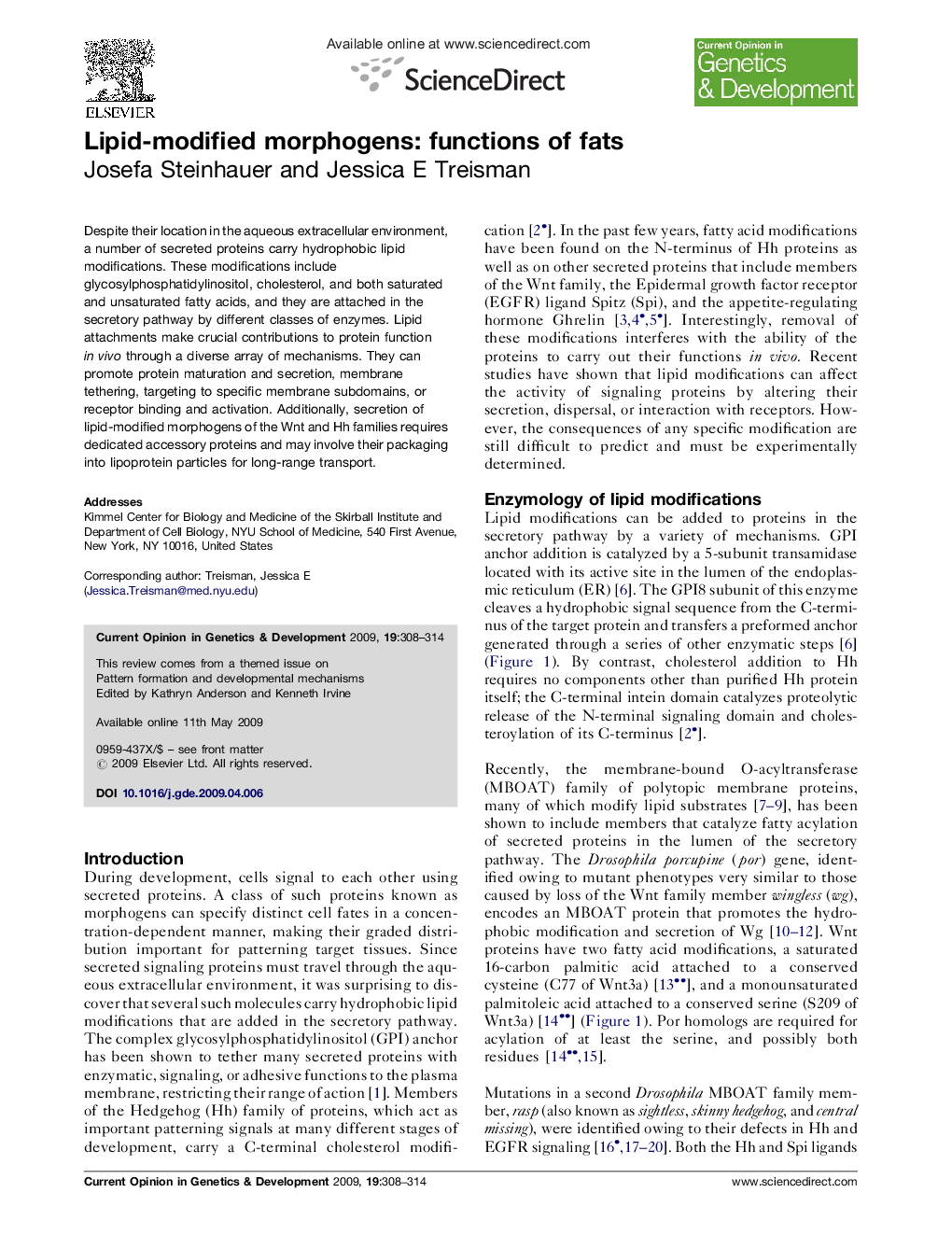| Article ID | Journal | Published Year | Pages | File Type |
|---|---|---|---|---|
| 2785144 | Current Opinion in Genetics & Development | 2009 | 7 Pages |
Despite their location in the aqueous extracellular environment, a number of secreted proteins carry hydrophobic lipid modifications. These modifications include glycosylphosphatidylinositol, cholesterol, and both saturated and unsaturated fatty acids, and they are attached in the secretory pathway by different classes of enzymes. Lipid attachments make crucial contributions to protein function in vivo through a diverse array of mechanisms. They can promote protein maturation and secretion, membrane tethering, targeting to specific membrane subdomains, or receptor binding and activation. Additionally, secretion of lipid-modified morphogens of the Wnt and Hh families requires dedicated accessory proteins and may involve their packaging into lipoprotein particles for long-range transport.
